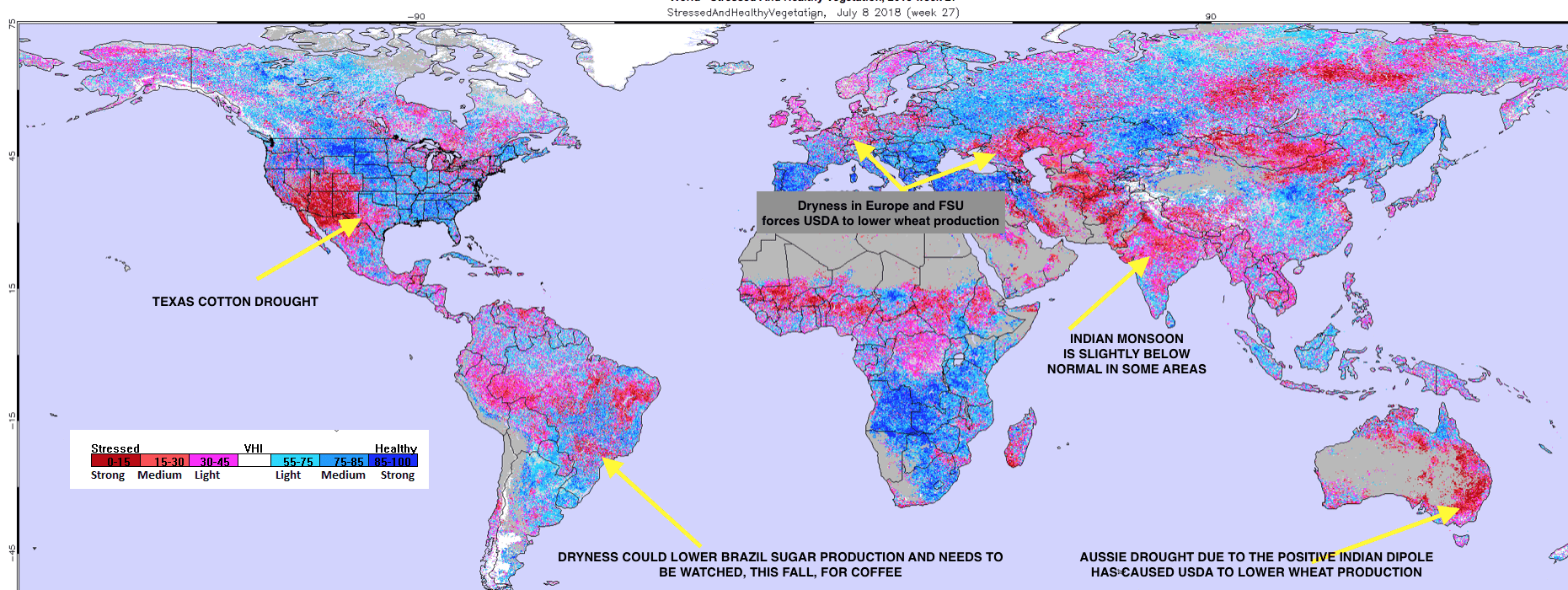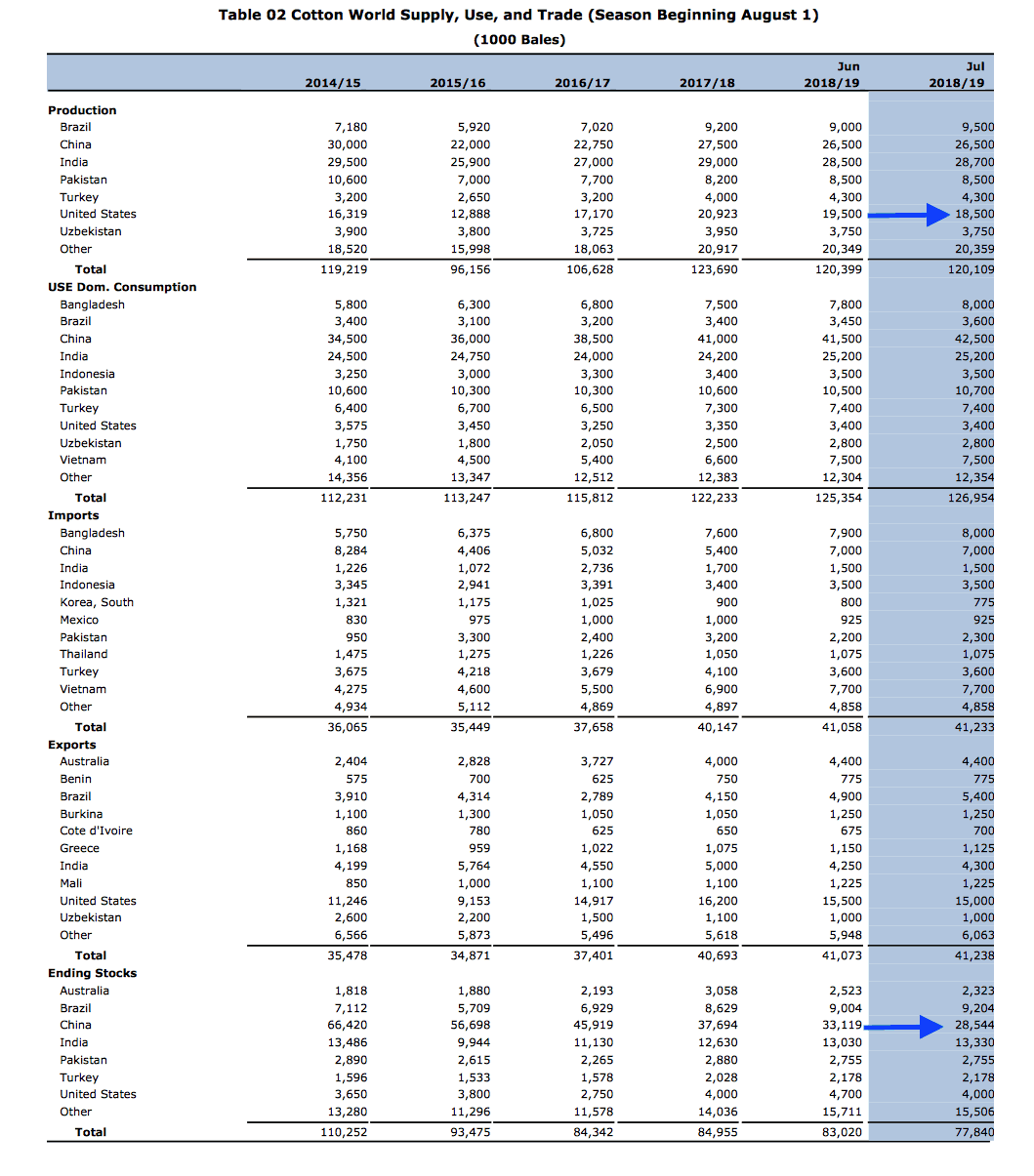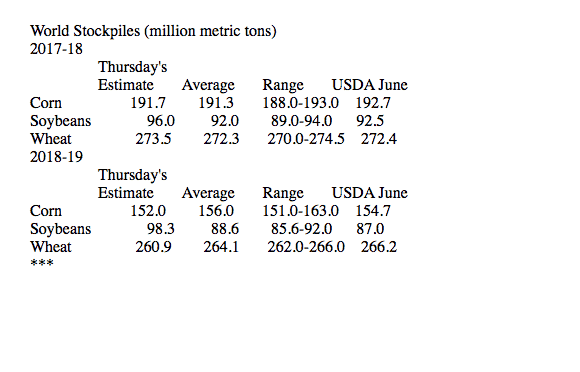It’s a battle between large global stocks for wheat, which has pressured the market the last 5-6 years, versus continued weather issues for wheat crops in Australia, Europe and parts of the Former Soviet Union. The USDA did indeed lower global world supplies a bit today, as we have suggested over the last two months. However, Trade War concerns and U.S. harvest pressure, has kept wheat choppy. The main AG-COMMODITY we have been bullish on, has been cotton. This has been due to the continued Texas drought and ideas China will continue to draw down stock piles. The information below shows the following:
A) Red regions where potential weather issues lie for crops. Big time rains are coming for Ukraine and western Russian grain areas, but may be a bit too late for wheat, but will help the corn crop. Brazil needs to be watched closely for some reduction in soft commodity crops, later this year
B) While cotton prices have soared. The chart below illustrates the lower U.S. cotton crop and reduced China stock situation by the USDA. If additional weather issues develop in other countries later this summer, cotton prices could still explode
C) The USDA lowered wheat production in several countries. The table on the bottom of this page depicts how global wheat production came in lower than the average trade guess. This is no surprise to us. Key to the wheat market will be whether a potential El Nino later this summer and fall could lower crops again heading into 2019.
We are starting a unique weekly investment commodity-weather report soon. For more information, please email us at
subscriptionsbestweather@gmail.com
The map above shows in red (stress) global weather issues for some crops. For the Midwest, heavy rains will need to taper off, in order for corn and soybean crops to reach their maximum potential. In some areas, it is still going to be too wet. The good news in Russia, is that important rains will ease some key dry regions over the next week or so
Cotton prices have gone limit up after the USDA report on July 11th. The reason is the lower U.S. cotton crop due to the Texas drought and reduced China projected ending stocks, even in the face of a Trade War















